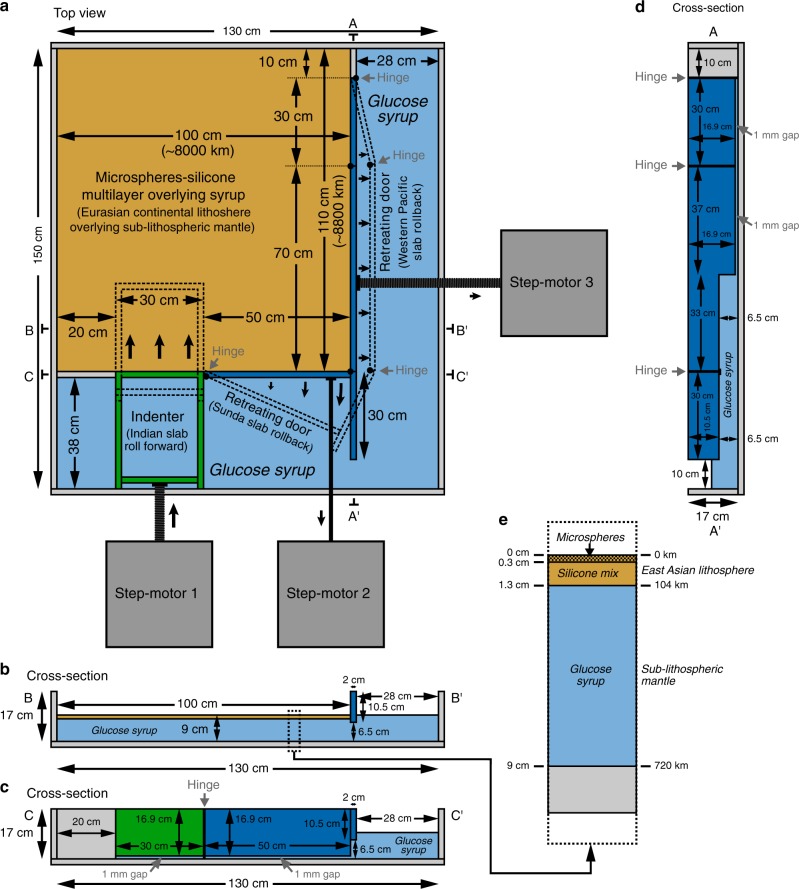Fig. 2.
Schematic diagrams illustrating the experimental apparatus set-up. The experiments investigate widespread deformation of a layered brittle–ductile system simulating part of the Eurasian continental lithosphere. a Top view of the experimental apparatus. Deformation in the model lithosphere is induced by northward motion of a rigid boundary (simulating progressive indentation of India into Eurasia and roll forward of the Indian slab and hinge) and outward motion of two retreating boundaries (simulating eastward slab rollback of the Western Pacific subduction margin and southward rollback of the Sunda slab). Motion of the three boundaries is driven by three step-motors. b, c East–west cross-sectional views through the model lithosphere and the southern boundary. d Cross-sectional view through the eastern boundary. e Vertical profile of the model layers with a frictional-plastic top layer made of fine-grained glass microspheres to simulate the brittle upper lithosphere, a linear-viscous layer of filled silicone oil simulating the ductile lower lithosphere (dynamic shear viscosity of 5.8 ± 0.2 × 104 Pa s), and a bottom layer made of low-viscosity glucose syrup with a linear viscous rheology (dynamic shear viscosity of 254 ± 7 Pa s) to simulate the sub-lithospheric mantle. Note that only the inner compartment of the box is filled with the layered system (continental lithosphere), while the entire box is filled with the low-viscosity bottom layer (sub-lithospheric upper mantle) to isostatically support the model continental lithosphere. Also note that 1 cm in the model represents 80 km in nature

